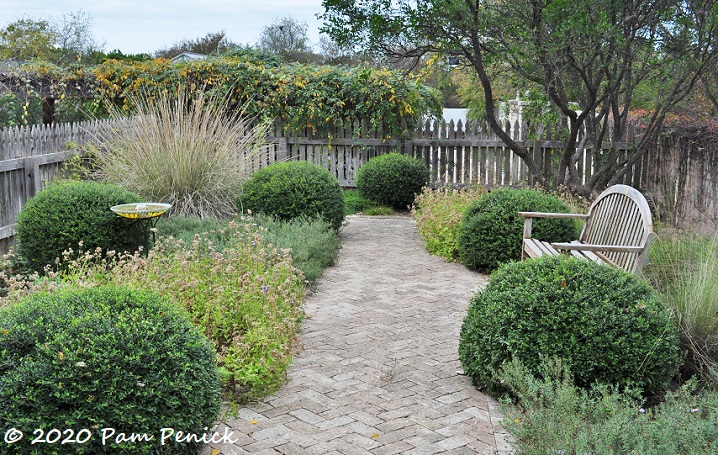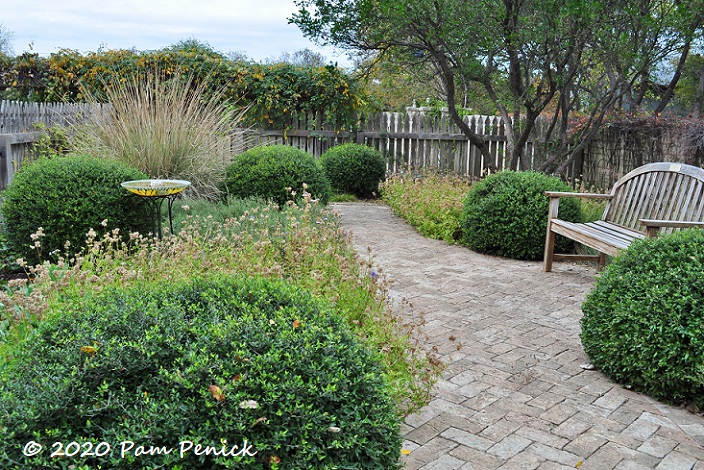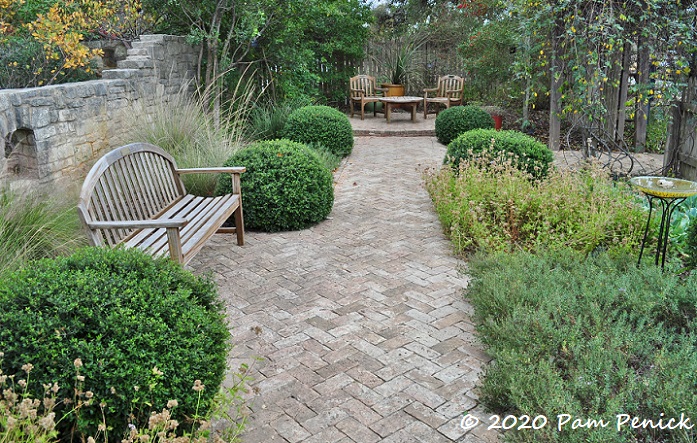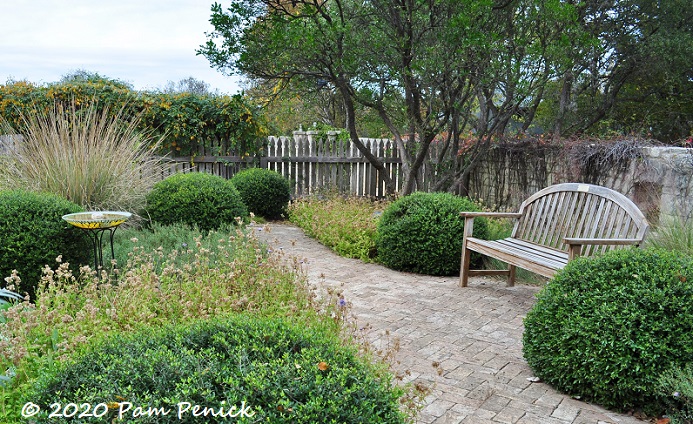Home-garden design inspiration using native plants

On my recent visit to the Lady Bird Johnson Wildflower Center, I was struck by the design of this small garden, which uses native Texas plants in a traditional but lively way to create a space that would look right at home in a residential setting.

It’s the Texas Mixed Border Home Inspiration Garden, where evergreen balls of dwarf yaupon holly substitute for traditional boxwood in an English-cottage-garden-meets-Texas style. Those round balls are key. Their repetition leads the eye along the herringbone brick path and across to the fence, emphasizing the depth of the long, skinny planting bed.

Blue mistflower and flowering vines on the fences and arbor entice pollinators during the growing season. Ornamental grasses add movement and seed for birds in winter. At the opposite end of the path, a circular patio elevated one step up makes a perfect end point for the path. Can’t you imagine this design as a home’s front walk, with the round patio just to the right or left of the front door? How inviting, right?

Well done, Wildflower Center. Your home garden inspiration game is strong.
__________________________
Digging Deeper
Come learn about gardening and design at Garden Spark! I organize in-person talks by inspiring designers, landscape architects, authors, and gardeners a few times a year in Austin. These are limited-attendance events that sell out quickly, so join the Garden Spark email list to be notified in advance; simply click this link and ask to be added. Season 8 kicks off in fall 2024. Stay tuned for more info!
All material © 2025 by Pam Penick for Digging. Unauthorized reproduction prohibited.


Dwarf yaupon holly balls?! What a great idea!
I have just the place for some, so I’m off to the nursery right now.
And they’ll look good all winter too.
A well-deserved tribute to this section of the Lady Bird Johnson Wildflower Centre. This small garden could inspire many.
Yes, lots of good ideas here.
Hi Pam!
I’m a friend of David’s, from Quercus, and I love your posts. I wish you would use more botanical names, because I think that helps everyone find or relate to the plants more exactly. Your photos are wonderful.
Thank you
Amy
Thanks for the feedback, Amy. I try to use botanical names when possible, especially with plants I’ve purchased for my garden and can definitely identify. Also, allow me to point you to my plant list if there’s ever a particular plant in my own garden that you’d like the botanical name for: https://www.penick.net/digging/?page_id=15002
I wish there was an evergreen shrub native to my area. This looks great.
Evergreen shrubs are so useful for year-round structure. It’s too bad there isn’t a native option, Lisa, for your Indiana garden. I’m sure there are other wonderful native shrubs, however, that bring life to your region’s gardens in other seasons.
Wow, I really love this from the plants to the hard-scape to the fence and bench. I keep experimenting with natives for my area (east Texas acidic soil) because I want to provide pollen/food for insects and animals. My garden is home to huge pecans and oaks so I’m working with shade, and natives are harder to come by here than in Austin. Good going Wildflower Center!
Availability is half the battle, isn’t it? And shade is the other half – ha! Thanks for your comment, Laura, and keep experimenting with those East Texas natives.
What a great example for home gardening, and seemingly not too difficult to achieve. What is the other ground cover next to the mist flower and near the bird bath? It’s sort of a minty-green color.
It’s hard to tell. Maybe fall aster? Or skullcap (Scutellaria)?